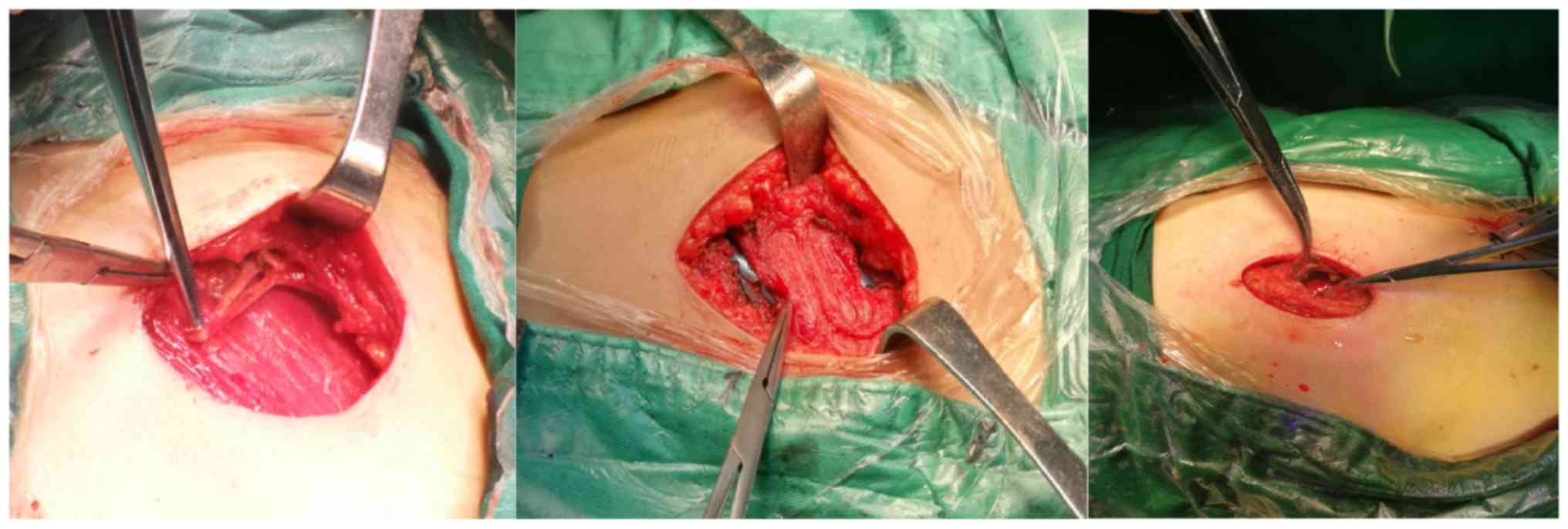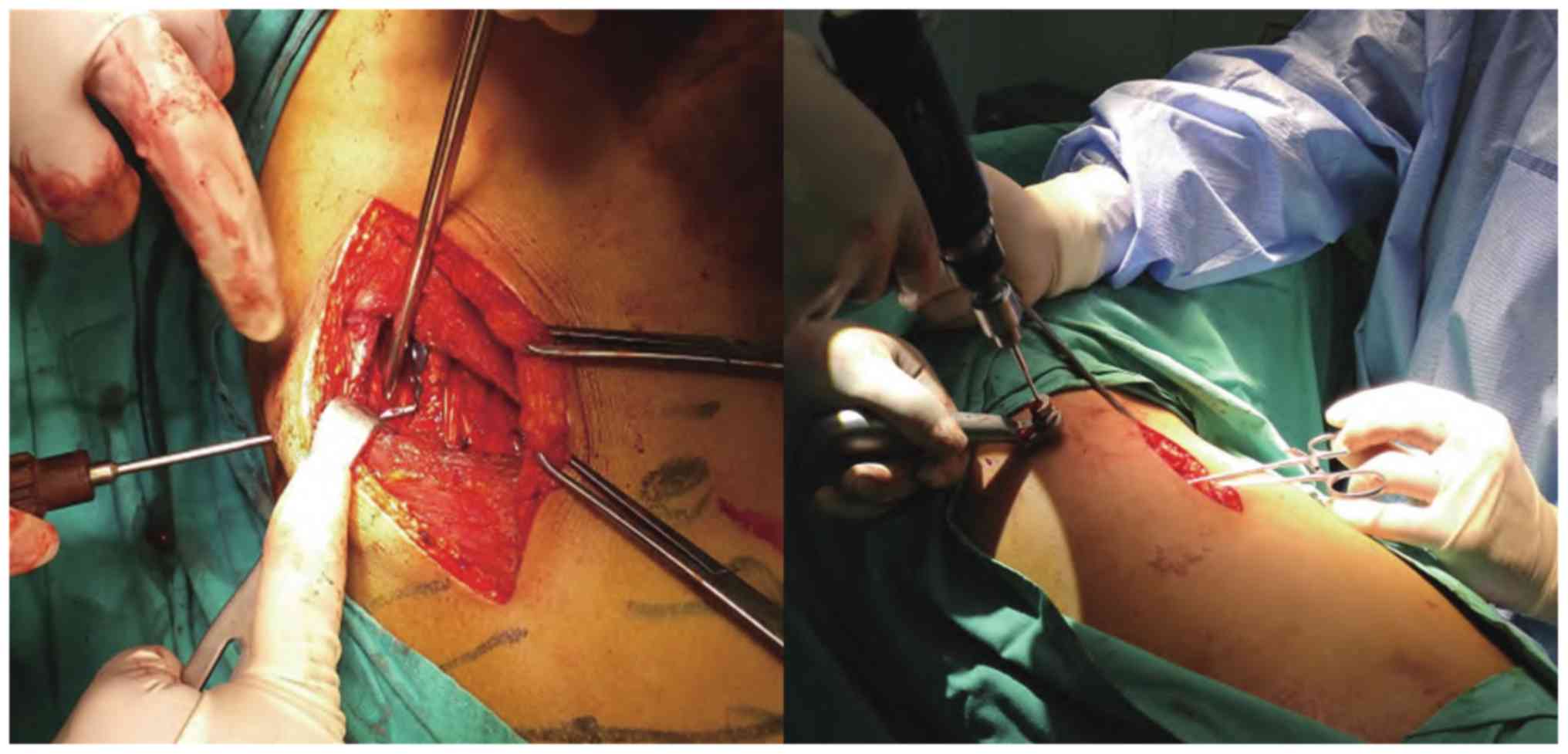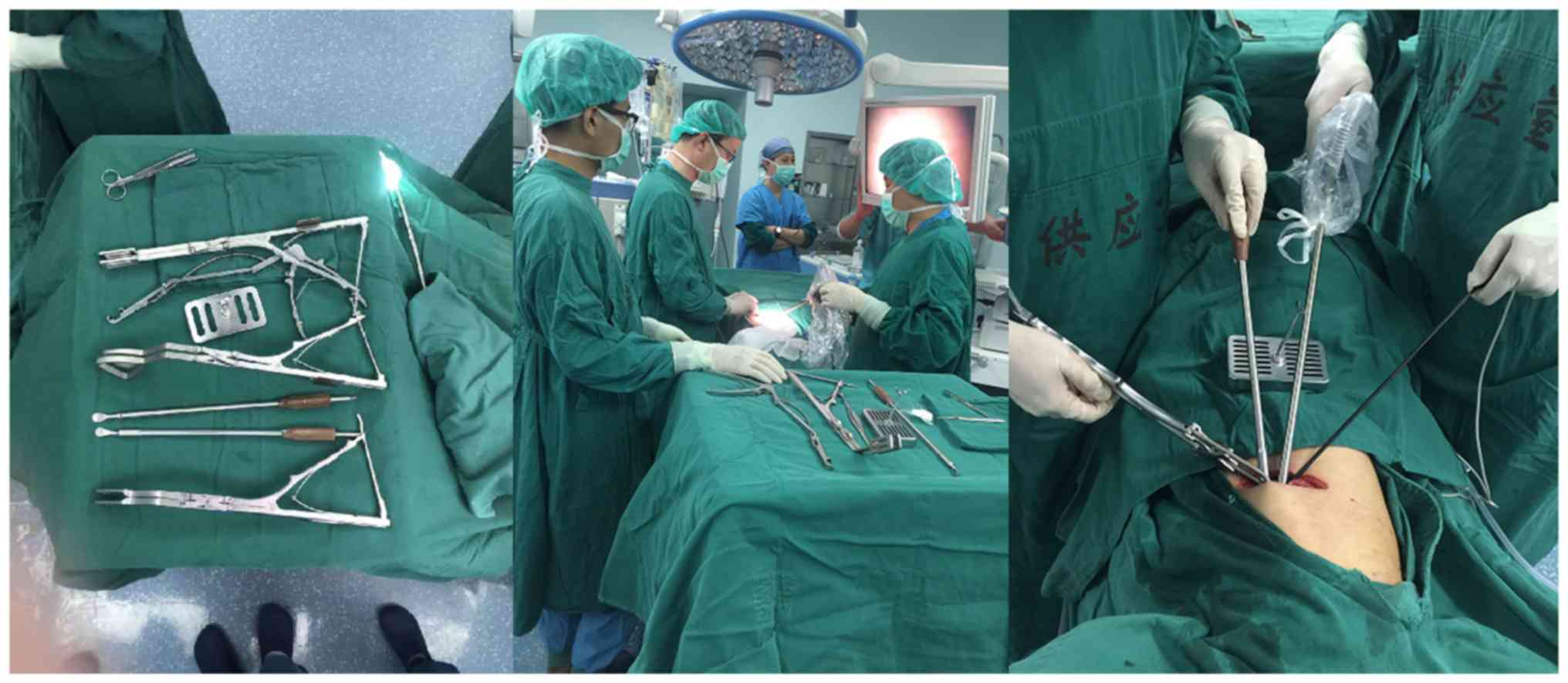|
1
|
Ho XN, Wee IJ, Syn N, Harrison M, Wilson L
and Choong AM: The endovascular repair of blunt traumatic thoracic
aortic injury in Asia: A systematic review and meta-analysis.
Vascular. 27:213–223. 2019. View Article : Google Scholar : PubMed/NCBI
|
|
2
|
Brasel KJ, Moore EE, Albrecht RA, deMoya
M, Schreiber M, Karmy-Jones R, Rowell S, Namias N, Cohen M, Shatz
DV, et al: Western trauma association critical decisions in trauma:
Management of rib fractures. J Trauma Acute Care Surg. 82:200–203.
2017. View Article : Google Scholar : PubMed/NCBI
|
|
3
|
Pieracci FM, Majercik S, Ali-Osman F, Ang
D, Doben A, Edwards JG, French B, Gasparri M, Marasco S, Minshall
C, et al: Consensus statement: Surgical stabilization of rib
fractures rib fracture colloquium clinical practice guidelines.
Injury. 48:307–321. 2017. View Article : Google Scholar : PubMed/NCBI
|
|
4
|
Bemelman M, de Kruijf MW, van Baal M and
Leenen L: Rib fractures: To fix or not to fix? An evidence-based
algorithm. Korean J Thorac Cardiovasc Surg. 50:229–234. 2017.
View Article : Google Scholar : PubMed/NCBI
|
|
5
|
Kocher GJ, Sharafi S, Azenha LF and Schmid
RA: Chest wall stabilization in ventilator-dependent traumatic
flail chest patients: Who benefits? Eur J Cardiothorac Surg.
51:696–701. 2017.PubMed/NCBI
|
|
6
|
Farquhar J, Almarhabi Y, Slobogean G,
Slobogean B, Garraway N, Simons RK and Hameed SM: No benefit to
surgical fixation of flail chest injuries compared with modern
comprehensive management: Results of a retrospective cohort study.
Can J Surg. 59:299–303. 2016. View Article : Google Scholar : PubMed/NCBI
|
|
7
|
Uchida K, Nishimura T, Takesada H, Morioka
T, Hagawa N, Yamamoto T, Kaga S, Terada T, Shinyama N, Yamamoto H,
et al: Evaluation of efficacy and indications of surgical fixation
for multiple rib fractures: A propensity-score matched analysis.
Eur J Trauma Emerg Surg. 43:541–547. 2017. View Article : Google Scholar : PubMed/NCBI
|
|
8
|
Pieracci FM, Lin Y, Rodil M, Synder M,
Herbert B, Tran DK, Stoval RT, Johnson JL, Biffl WL, Barnett CC, et
al: A prospective, controlled clinical evaluation of surgical
stabilization of severe rib fractures. J Trauma Acute Care Surg.
80:187–194. 2016. View Article : Google Scholar : PubMed/NCBI
|
|
9
|
de Campos JRM and White TW: Chest wall
stabilization in trauma patients: Why, when, and how? J Thorac Dis.
10 (Suppl 8):S951–S962. 2018. View Article : Google Scholar : PubMed/NCBI
|
|
10
|
Taylor BC, French BG and Fowler TT:
Surgical approaches for rib fracture fixation. J Orthop Trauma.
27:e168–e173. 2013. View Article : Google Scholar : PubMed/NCBI
|
|
11
|
Berninger MT, Kellermann F, Woltmann A,
Bühren V and Lang M: Single-port VATS-assisted internal fixation of
serial rib fractures. Unfallchirurg. 121:335–338. 2018.(In German).
View Article : Google Scholar : PubMed/NCBI
|
|
12
|
Fraser SF, Tan C, Kuppusamy MK, Gukop P
and Hunt IJ: The role of a video-assisted thoracic approach for rib
fixation. Eur J Trauma Emerg Surg. 43:185–190. 2017. View Article : Google Scholar : PubMed/NCBI
|
|
13
|
Xia H, Zhu P, Li J, Zhu D, Sun Z, Deng L,
Zhang Y and Wang D: Thoracoscope combined with internal support
system of chest wall in open reduction and internal fixation for
multiple rib fractures. Exp Ther Med. 16:4650–4654. 2018.PubMed/NCBI
|
|
14
|
Pieracci FM, Johnson JL, Stovall RT and
Jurkovich GJ: Completely thoracoscopic, intra-pleural reduction and
fixation of severe rib fractures. Trauma Case Rep. 1:39–43. 2015.
View Article : Google Scholar : PubMed/NCBI
|
|
15
|
Lee SK and Kang K: Nuss procedure for
surgical stabilization of flail chest with horizontal sternal body
fracture and multiple bilateral rib fractures. J Thorac Dis.
8:E390–E392. 2016. View Article : Google Scholar : PubMed/NCBI
|
|
16
|
Klein GT, Lu Y and Wang MY: 3D printing
and neurosurgery - ready for prime time? World Neurosurg.
80:233–235. 2013. View Article : Google Scholar : PubMed/NCBI
|
|
17
|
Nolasco-de lRAL, Mosiñoz-Montes R,
Matehuala-García J, Román-Guzmán E, Quero-Sandoval F and
Reyes-Miranda AL: Unstable thorax fixation with bioabsorbable
plates and screws. Presentation of some cases. Cir Cir. 83:23–28.
2015.PubMed/NCBI
|
|
18
|
Benian AS, Pushkin SIu, Syzrantsev IuV and
Kameev IR: Osteosyntesis of ribs using the technology ‘matrix rib’
in treatment of victims with multiple float rib fractures. Vestn
Khir Im I I Grek. 172:78–79. 2013.(In Russian). PubMed/NCBI
|
|
19
|
Vana PG, Neubauer DC and Luchette FA:
Contemporary management of flail chest. Am Surg. 80:527–535.
2014.PubMed/NCBI
|
|
20
|
Gao E, Li Y, Zhao T, Guo X, He W, Wu W,
Zhao Y and Yang Y: Simultaneous surgical treatment of sternum and
costal cartilage fractures. Ann Thorac Surg. 107:e119–e120. 2019.
View Article : Google Scholar : PubMed/NCBI
|
|
21
|
Galos D, Taylor B and McLaurin T:
Operative fixation of Rib fractures indications, techniques, and
outcomes. Bull Hosp Jt Dis (2013). 75:15–20. 2017.PubMed/NCBI
|
|
22
|
Tarng YW, Liu YY, Huang FD, Lin HL, Wu TC
and Chou YP: The surgical stabilization of multiple rib fractures
using titanium elastic nail in blunt chest trauma with acute
respiratory failure. Surg Endosc. 30:388–395. 2016. View Article : Google Scholar : PubMed/NCBI
|
|
23
|
Dehghan N: Challenges in plate fixation of
chest wall injuries. Injury. 49 (Suppl 1):S39–S43. 2018. View Article : Google Scholar : PubMed/NCBI
|
|
24
|
Morodomi Y, Okamoto T, Tagawa T, Shoji F,
Katsura M, Fujishita T, Fujiyoshi T, Akahoshi T, Yasuda M and
Maehara Y: A novel method of using bioabsorbable materials for the
surgical repair of flail chest. J Trauma Acute Care Surg.
81:984–987. 2016. View Article : Google Scholar : PubMed/NCBI
|
|
25
|
Nolasco-de la Rosa AL, Mosiñoz-Montes R,
Matehuala-García J, Cuautle-Ramírez AA, Román-Guzmán E,
Reyes-Miranda AL and Quero-Sandoval F: Thoracic inestability fixed
with bioabsorbable screws and plates. Acta Ortop Mex. 30:311–315.
2016.(In Spanish). PubMed/NCBI
|
|
26
|
Kim YH, Park Y and Chung KJ:
Considerations for the management of medial orbital wall blowout
fracture. Arch Plast Surg. 43:229–236. 2016. View Article : Google Scholar : PubMed/NCBI
|
|
27
|
Leinicke JA, Elmore L, Freeman BD and
Colditz GA: Operative management of rib fractures in the setting of
flail chest: A systematic review and meta-analysis. Ann Surg.
258:914–921. 2013. View Article : Google Scholar : PubMed/NCBI
|


















